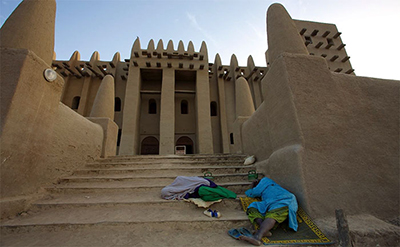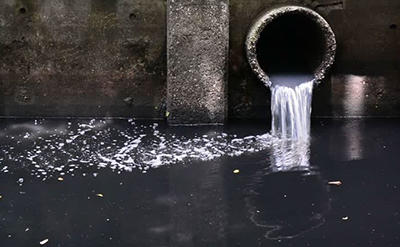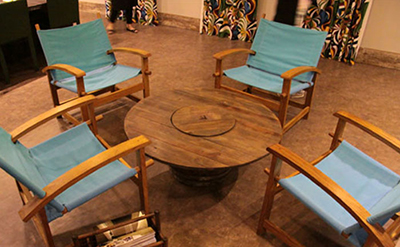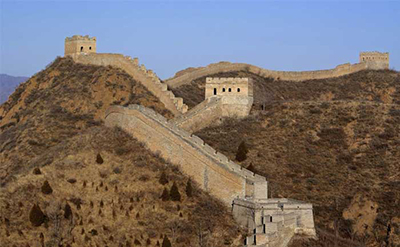Adobe Construction
One of the Oldest Construction Technique – yet can fulfill Human Housing Requirements
Adobe is a material used for building that is made of organic materials such as earth, clay, straw, and water. Buildings that are constructed from adobe have a similar appearance to cob or rammed earth buildings. Bricks are made from adobe and then, later on, are used for the building of walls. Adobe bricks are traditionally made in open cast molds and left to sun-dry rather than being kiln-fired. They are laid using an earth mortar and smoothed down when the wall is finished before a clay render is usually applied as a surface coating. This production process, as well as the nature of clay, means that adobe bricks have advantageous water resistance. However, buildings that are exposed to a lot of wet conditions should be provided with eaves to protect the walls. Adobe bricks have similar properties to other forms of earth construction – fire-resistant, flexible, durable, provide sufficient thermal mass to ensure good energy efficiency, and good sound insulation.

Adobe construction spread throughout warm, dry climates. Adobe was one of the first materials ancient humans used to create buildings, dating as far back as the 8th century B.C. The word “adobe” is Spanish, meaning “brick.” The largest adobe building in the world, and probably the most famous adobe structure standing, is The Great Mosque at Djenné in central Mali, near the edge of the Sahara Desert. The Great Mosque was built in 1907 on the ruins of earlier mosques. It has walls as thick as 24 inches (61 centimeters), and arches measuring 45 feet high (13.7 meters) and covers some 62,500 square feet (5,806 square meters)
How to make Adobe Bricks?
The material required for this type of construction is not going to cost you a fortune. It’s just present beneath your feet. We just need the sense and awareness to see them as construction material. Soil is used as the main construction material for this. You may need to buy a couple of things from the market to build your Adobe house. For the making of adobe bricks, you first need to prepare an adobe mixture which is prepared by the following process.
- Mix sand and clay with water and then add straw. This helps the mud shrink into uniform brick shapes as it dries.
- The mud mixture is put into wooden forms and leveled by hand. You can make them any size or shape you want, but they should be easy to move by hand.
- The bricks are removed from the forms and laid onto a surface in the sun that’s covered with straw or grass.
- After they have dried for a few days, the bricks are set on their edges for at least four weeks of air-drying.
The materials required for this type of construction are Sand, Clay, water, and straw. The details of these are given below:

1- Earth (Soil):
Soil for adobe is generally easy to find in abundance and can generally be found all around the world. One good way to acquire the soil you need is to use what’s excavated from your foundation trenches. One of the main guidelines for choosing sand for your adobe mixture is to use rough and coarse sand that has many different particle sizes included in it. Rough-edged sand helps the particles to lock together better and will prevent serious cracking The clay is a binder and its purpose is to hold the sand (aggregate) together. Something important to understand is that clay expands when it’s made wet and it contracts when it’s dried out. This is why you can’t build a house out of pure clay. It needs the aggregate and straw fibers to give it stability and to prevent cracking.
2- Straw
It acts as natural rebar in a similar way that metal rebar would function in concrete. It adds tensile and shear strength to adobe bricks and holds an adobe structure more together. Use straw that is fresh and not brittle or rotten. Make sure that it has been kept dry before purchasing it too. Sometimes a bale of straw might look okay on the outside, but it’s a good idea to examine some of the stock for mold or mildew by opening up a bale to see the inside portions. Look for bales of straw that have long strands. Six to twelve inches is an appropriate length. If it’s too short you are losing out on the benefits of this ingredient for adobe.


3- Water
Water is the final ingredient that you will need for making adobe bricks. There’s nothing particularly special about the kind of water that you use though. If you’re getting it from your water lines then you have nothing to worry about. But if you’re collecting it from a pond or open body of water then perhaps just make sure that you remove any leaves or other organic matter from it first.
Dimensions of Adobe Bricks
Usually, adobe bricks can be of size 10 x 4 x 14-inch. Many older buildings contain adobe bricks with dimensions up to 6 x 12 x 24 inches.
How to build an Adobe House
Adobe houses are constructed with adobe bricks. The making of adobe brick is quite simple as compared to kiln brick which is discussed earlier. Once you made the adobe bricks, the process is quite similar to a simple masonry house. Adobe bricks are laid with mud mortar. Mud mortar is simply prepared by mixing some with soil. The walls of adobe houses are quite thick which is responsible for their excellent thermal insulation. The step-by-step guide to build your own adobe house is discussed below. Following these steps carefully, you can make your own adobe house with your own barehand with the help of a few friends or you can hire professionals to do it for you.
Step 1: Preparation of site and layout of building:
Clean the site. There should be no grass, plants on the earth. Also, when you make adobe bricks, don’t use the topsoil material as it contains a lot of impurities. The mixture should be free from glass plastic large stones, small pieces of wood, roots, etc. Also, compress the site if necessary to avoid settlement in the future. Compressing on loose soil is mandatory Once the site is cleaned the next step is to make a layout of your building. Layout simply means transferring the walls from plan to site. Take a limestone powder and place it where your walls are going to be on the ground.
Step 2: Foundation:
Foundations are key to build a strong and durable house. Foundations of adobe structures vary from design to design. Adobe walls are load-bearing walls having a thickness of 2ft. They have high thermal mass and are very thermally insulated. A simple single-story adobe building or house does not require any special foundations. The foundations of adobe walls can be made of brick ballast or gravels or stones if available. Simply dig a trench of 1 or 2 ft beneath the walls. Dig the trench in a slope to allow the drainage just like the picture. Then add the plastic sheet beneath and add a layer of gravels or brick ballast up to the ground level.


Step 3: Walls:
The walls of adobe houses are just like the masonry walls we use in a conventional building. The difference is instead of kiln bricks we use adobe bricks and instead of cement mortar we use mud mortar. Mud mortar is simply prepared by mixing the mud with water. Adobe walls are built just like the masonry conventional walls. We place a brick and use mortar on the side and top to lay another brick. Stack bricks together to make thick walls,10 inches (25.4 centimeters) or more — for strength. This mass helps cool the house in summer and warm it in winter.
Step 4: Windows, Ventilator, and Door frame:
Place the wooden door and window frames where you want to have the windows and doors and then build your adobe walls around them. This is as simple as that. You can also have a solid timber act as the header for the span of the top of the window or door. Have a big piece of wood at least 6 inches thick and go for as wide as the wall. For placing the ventilator, always try to place the ventilator at the top of the wall. In this way, they will not need any support and no frame will be required. The roof will act as a lintel to them.

Step 5: Roofing:
The roof of these types of structures can be of the wood frame structure or concrete. But if you are using a concrete roof, you need to have a strong foundation and a bond beam with a wall as well. The roof can be challenging and a bit complex if you want to build a double-story. For a single-story house, you can make traditional roofs such as one made with bamboo.
Step 6: Plastering:
Plastering of adobe walls is important. You do not want the rainwater to hit directly on adobe bricks. So plastering can be done using Limestone or mud or cement plaster. The plastering of adobe bricks can be done in various ways. There are various ways to do the plastering of adobe bricks.
- Mud Plaster:
Mud plaster is generally made of the same materials as adobe, so it bonds to the adobe relatively well. Mud plaster is fairly easy to use, but the application process is time-consuming. The mud plaster must be smoothed by hand once it is applied, a process that may incorporate animal skins or similar materials and rounded stones to achieve a smooth surface. Pigments may also be applied in the final layer of the mud plaster. - Lime Plaster:
Lime plastering results in a coating that is harder than mud plaster but less flexible and prone to cracking. Widely used in the 19th century, it is made from lime, sand, and water. To cover an adobe wall with lime plaster, the wall is scored diagonally with a hatchet or similar tool to create grooves about 1 1/2-inches deep that are filled with a mixture of stone chips and lime mortar before a thick layer of lime plaster is applied. Pigments can be mixed into the lime plaster to achieve various colors. A soft matte finish can be created by smoothing the plaster with a wood trowel, while a steel trowel produces a satiny or glossy surface. - White Washing:
Whitewash, a material used since ancient times as a sealer, contains clay, water, and ground gypsum. Whitewash is either brushed on the adobe masonry or applied using a coarse fabric like burlap. Although whitewash is relatively expensive, it does not maintain its character well and it requires regular reapplication.
Step 7: Flooring:
Nobody wants to lay their feet on the uneven surface. The floor of the unfinished adobe house is just as same as the floor outside the building. So, we need to provide some kind of finishing to give it a proper surface. The ground is compacted a little bit and then plaster is applied on the ground. This plaster is done with a mixture of fine clay and water. After plastering, the surface is coated with linseed oil.
Adobe construction – Download PDF
Adobe construction (Explained in Urdu/Hindi) – Youtube Video




